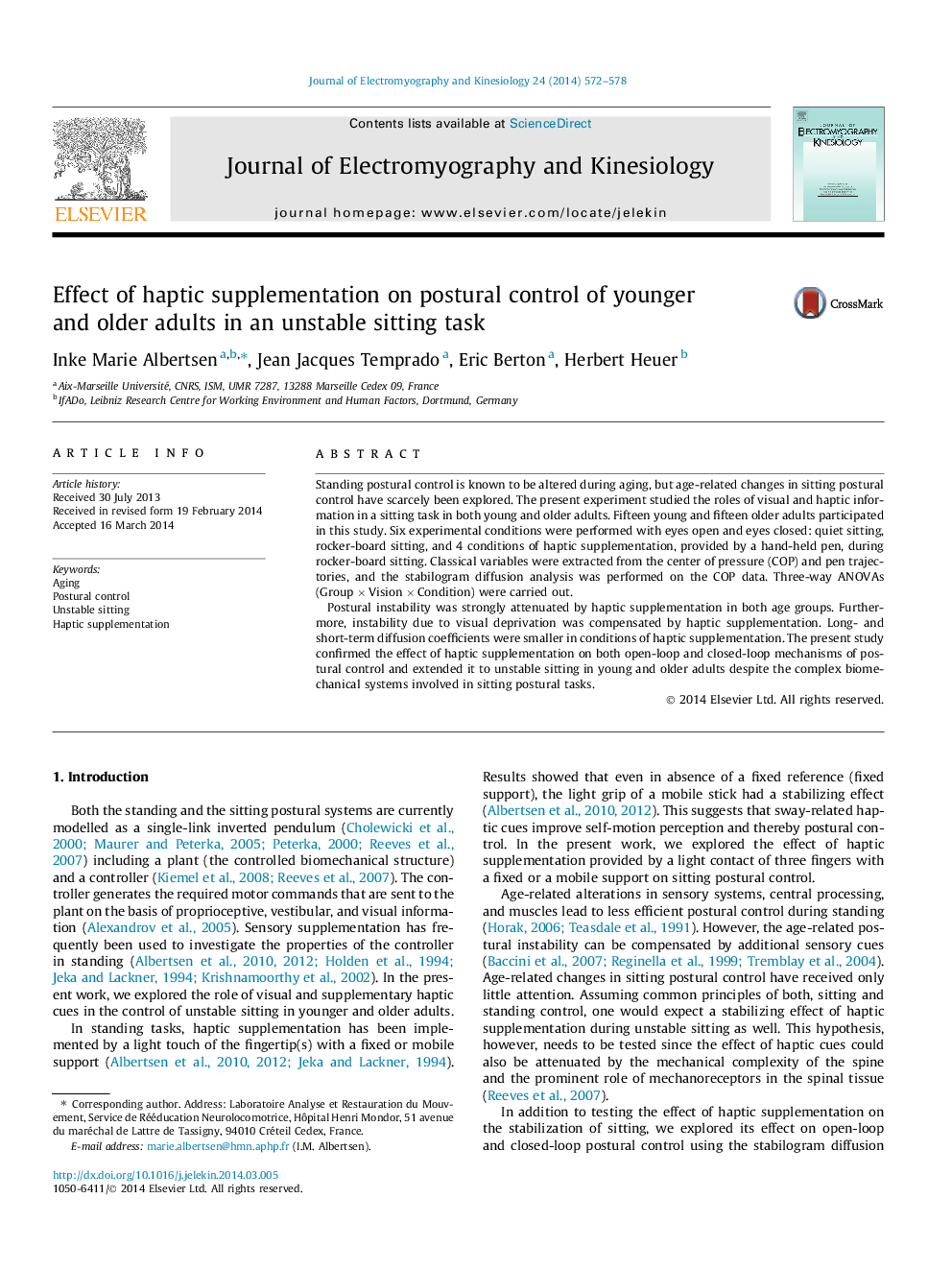| Article ID | Journal | Published Year | Pages | File Type |
|---|---|---|---|---|
| 4064620 | Journal of Electromyography and Kinesiology | 2014 | 7 Pages |
Standing postural control is known to be altered during aging, but age-related changes in sitting postural control have scarcely been explored. The present experiment studied the roles of visual and haptic information in a sitting task in both young and older adults. Fifteen young and fifteen older adults participated in this study. Six experimental conditions were performed with eyes open and eyes closed: quiet sitting, rocker-board sitting, and 4 conditions of haptic supplementation, provided by a hand-held pen, during rocker-board sitting. Classical variables were extracted from the center of pressure (COP) and pen trajectories, and the stabilogram diffusion analysis was performed on the COP data. Three-way ANOVAs (Group × Vision × Condition) were carried out.Postural instability was strongly attenuated by haptic supplementation in both age groups. Furthermore, instability due to visual deprivation was compensated by haptic supplementation. Long- and short-term diffusion coefficients were smaller in conditions of haptic supplementation. The present study confirmed the effect of haptic supplementation on both open-loop and closed-loop mechanisms of postural control and extended it to unstable sitting in young and older adults despite the complex biomechanical systems involved in sitting postural tasks.
